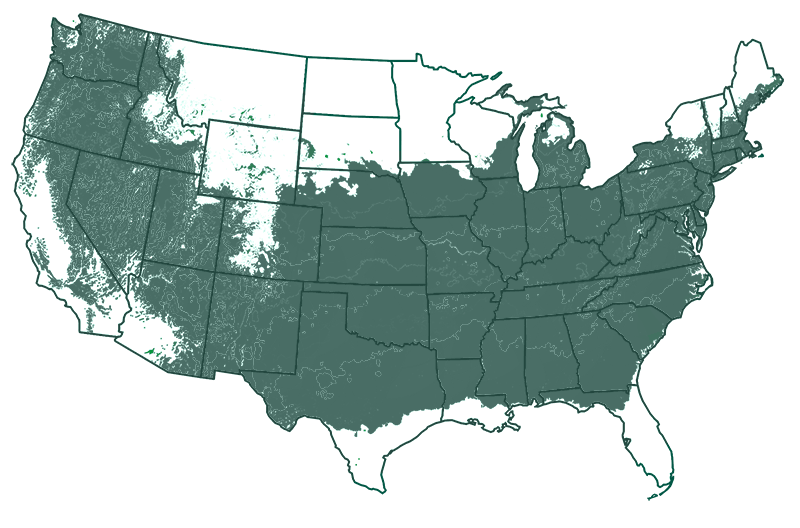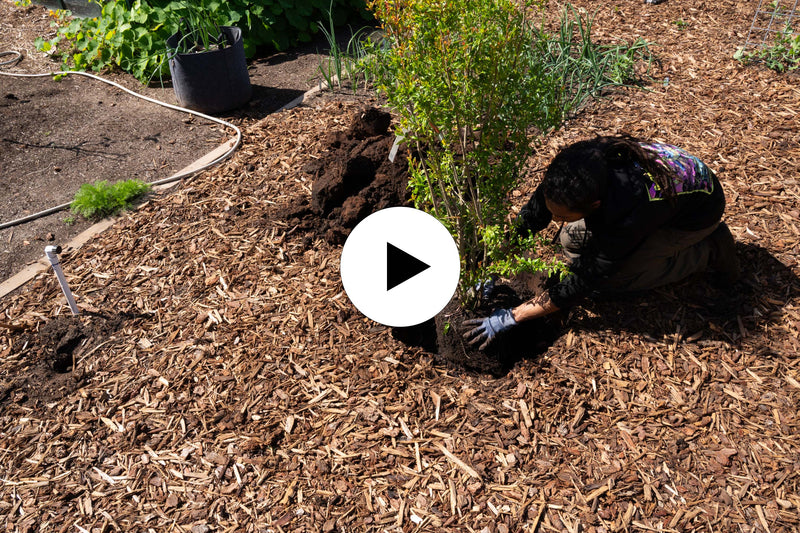


Gala Apple Tree
View More Planting Info
Gala Apple Trees thrive in milder climates (USDA Zones 5-8). Choose a location away from nearby structures and in full sun - at least 6 hours per day. They grow best in well-draining soil enriched with organic matter and a slightly acidic pH. Dig a hole twice as wide and the same depth as the root ball. Place the tree in the hole, ensuring it's straight, and backfill with soil, tamping down gently to remove air pockets. Water thoroughly to settle the soil around the roots. Apply a layer of mulch around 3-4 inches thick around the base of the tree after planting.
Sunlight:
Plant in full sun, providing at least 6 to 8 hours of direct sunlight per day.
Spacing:
Plant 10-15 feet away from any other trees or nearby structures in your garden.
Fertilizing:
Feed annually in early spring with a balanced, slow-release fertilizer.
- Product Info
- Care and Maintenance
- Planting Care
- Growing Zone
Product Info
Mature Height: 10-20 ft.
Mature Width: 8-10 ft.
Sunlight: Full Sun
Growth Rate: Moderate
Does Not Ship To: AZ, CA, ID, OR, WA
Care and Maintenance
Watering: Gala apples need regular watering to produce their juicy fruits. After planting, water once or twice weekly, depending on your climate. Once established, they will only need additional watering during high temperatures or when there is little rainfall.
Fertilizing: Fertilize at planting time and in early spring each year with a balanced slow-release fertilizer before new growth appears.
Pruning: Prune in late winter to shape the tree, improve airflow, and encourage new growth. Remove dead, crossing, and low-hanging branches to improve productivity.
Pests and Diseases: Healthy Galas are not majorly disease-prone but are susceptible to common apple diseases like scab, mildew, and rust. Possible pests include aphids, apple maggots, and mites.
Pollination: Gala Apples have the highest production when cross-pollinated with a suitable apple variety. Plant within 50 feet of another compatible variety for best fruit set. Or purchase the Apple Orchard, which includes Gala, Fuji, Granny Smith, and Honeycrisp trees.
Harvesting: Apples will begin ripening around the start of September, ready to pick once they have changed color and are easy to pull off the branch.
Recovery Time: Transitioning from our nursery to your home can be a bit of a shock to your plant. A short acclimation period helps it recover and reduces stress.
Climate Adjustment: Every environment is unique. Giving your plant time to adjust to the local climate, humidity, and light conditions in a shady spot will set it up for better growth and health.
How to Acclimate Your Plant: Keep the plant in its container and place it in a shady, sheltered area away from high winds. Ensure it's watered adequately – the soil should be moist but not waterlogged. Monitor the plant for any signs of distress and allow it to adjust for a few days before planting. After a few days of acclimation, your plant will be better prepared to thrive in its new home for years to come.
Planting Care
Sunlight: Plant in full sun, providing at least 6 to 8 hours of direct sunlight per day.
Spacing: Plant 10-15 feet away from any other trees or nearby structures in your garden.
Fertilizer: Feed annually in early spring with a balanced, slow-release fertilizer.
Growing Zone
Growing Zone 5-8

Fruit Trees & Bushes Delivered to Your Doorstep
Unpack, Plant and Grow!





